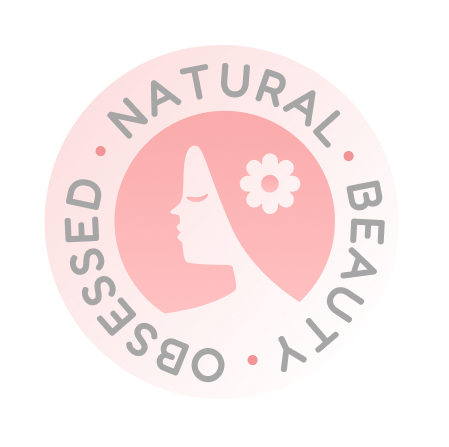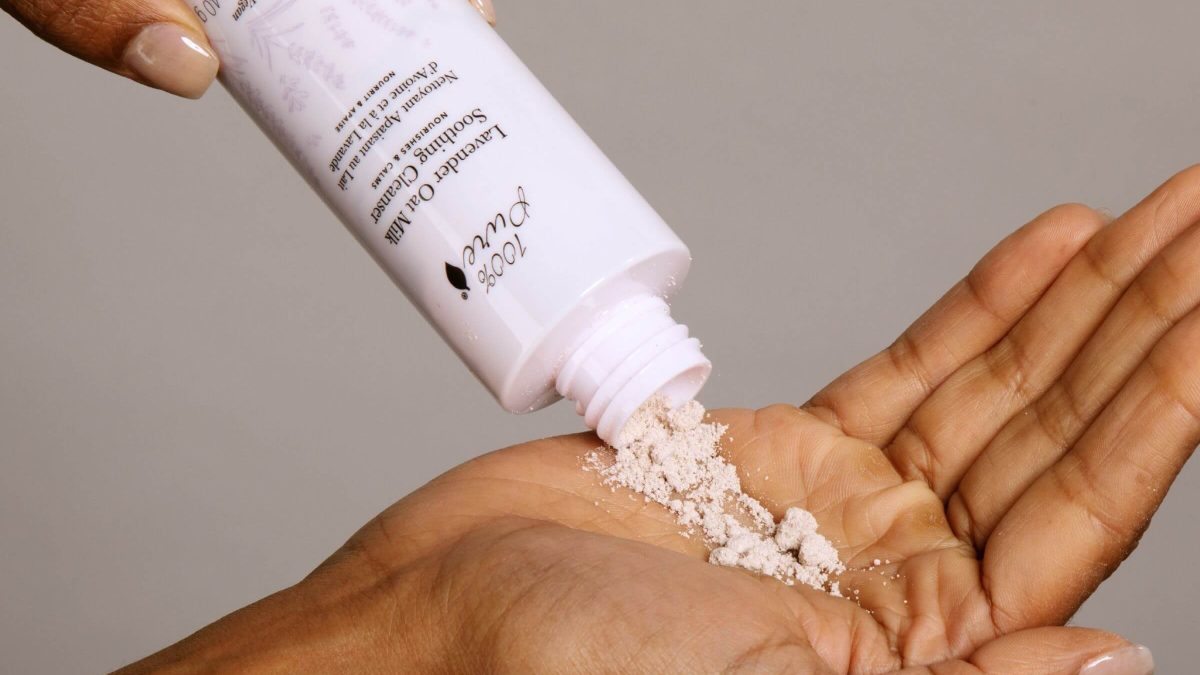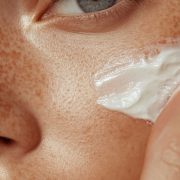Everything you need to know on exfoliating, do’s and don’ts, and the different types of exfoliation your skin craves
Posted on April 3, 2025 Written by: 100% PURE®

For many, a common skin care routine is as simple as ‘wham, bam’, cleanse, moisturize, and ‘thank you ma’am’! But the unsung hero of any skin care routine just might be exfoliation. It so happens to be one of the most overlooked steps to your glowiest skin ever.
We’re here to demystify this important step, and guide you through the do’s and don’ts of exfoliation – call it a 101. This tell-all includes the basics of physical versus chemical exfoliation – plus shows you how to find the right one for radiant, glowing skin.
Why Do You Need to Exfoliate Regularly?
Ever wonder how that glass-like complexion is achieved or how makeup can go on so smoothly for some while catching on patches of your skin? Genetic lottery or ‘maybe she’s born with it’? Maybe it’s exfoliation. Ah, this likely is at the top of the skin care routine!
Exfoliation is the process of removing dead skin cells from the surface of your skin. Otherwise, when old skin cells start to pile up on the surface of the skin, it can leave skin looking dull, rough, and dry. If that’s not unhappy skin enough, the build-up of dead skin cells can result in excess oil and clogged pores, leading to blemishes and acne.
Proper exfoliation removes the barrier of dead skin cells clogging the skin and allows for increased cell turnover, creating brighter, clearer skin. This opens the way for deeper penetration of skin care products, which makes them more effective. Now for the exfoliation methods!

What Is Physical Exfoliation?
As the name suggests, physical exfoliation is the method of manually sloughing dead skin off your face. Some of the more popular physical exfoliating scrubs and exfoliating cleansers on the market usually contain small granules – ground-up nuts, coffee, sugar crystals – to buff away dead skin. However, some of these particles can damage skin or be Earth-unfriendly, like microbeads, which can cause microtears and skin damage over time.
The best physical exfoliants are those with smaller, finer particles that aren’t abrasive to the skin and are free of artificial chemicals and detergents that are harmful to our bodies, and free of environmentally damaging exfoliating beads. can also be paired with fruit enzymes in skin care formulations. They’re a gentle but effective way to remove dead skin cells.
Popular tools for physical exfoliation that buffs away dead skin and debris include a variety of face exfoliation brushes, face mitts or washcloths, and konjac sponges. Speaking of facial sponges, our entirely vegan, cruelty free will help you take the sponge-plunge into all natural skin care!
Our natural facial sponge is just two simple ingredients: konjac plant and bamboo charcoal and it’s exfoliating but gentle. Charcoal bamboo acts like a magnet pulling impurities and leaving the skin soft and clean (so much for beauty being complicated) and is super travel-friendly for your toiletries bag. Let’s get ‘physical, physical’!
What Is Chemical Exfoliation and What Are the Best Options?
When it comes to chemical exfoliation, don’t let the word ‘chemical’ intimidate you. When you exfoliate your face chemically, you’ll use a chemical liquid or gel to dissolve dead skin cells. One of the most popular chemical treatments for exfoliating at home include alpha hydroxy acids (AHAs) and beta hydroxy acids (BHAs).
AHAs are a type of water-soluble chemical exfoliant that are great for targeting the surface of your skin. These acids are chemical compounds that are found naturally in common foods, and especially in fruits. Green apple, berries, and citrus fruits are all natural sources of alpha hydroxy acids.
Unlike AHAs, beta hydroxy acids are oil-soluble – an important feature, as it allows these types of acids to penetrate the skin barrier. The best-known (and most commonly used) beta hydroxy acid is salicylic acid, which is usually found in clarifying products and acne treatments.
By this point, you might be wondering if AHAs and BHAs can be used together for double the exfoliating power? The short answer–yes! In fact, they can really give skin the one-two punch by doing a surface cleaning (that would be the AHAs) and then going much deeper into the skin (enter BHAs) and taking out the dirt and gunk that really gets stuck in pores.
Now back to that short answer. Some people with tolerant skin could use both AHAs and BHAs together, but it . It might be too irritating for other skin types, especially if you have sensitive or mature skin, and can put your skin at risk of over-exfoliating.
Finding the Best Exfoliating Face Wash for Your Skin Type
Exfoliation is the secret to smoother, brighter skin, but using the wrong product can lead to irritation or imbalance. The key is to find the best exfoliating face wash suited to your skin type—one that effectively removes dead skin cells while supporting your skin’s unique needs. Whether your skin is oily, dry, sensitive, or combination, the right exfoliating face wash can make all the difference in your routine.
Best Exfoliating Face Wash for Oily Skin
Oily skin types need an exfoliating cleanser that removes excess oil and unclogs pores without stripping the skin. Look for ingredients like charcoal, tea tree oil, or salicylic acid to help control shine and prevent breakouts.
⭐ – A best exfoliating cleanser formulated with bamboo charcoal and clay to deeply detoxify, absorb oil, and leave skin feeling refreshed. It’s a good exfoliating face wash for those struggling with acne or congestion.
Best Exfoliating Facial Cleanser for Dry or Sensitive Skin
If your skin leans toward dryness or sensitivity, an aggressive exfoliate face wash can do more harm than good, as demonstrated in from the International Association for Applied Corenotherapy.
Instead, opt for a gentle exfoliating cleanser packed with soothing ingredients like colloidal oatmeal, honey, or aloe vera to hydrate while softly resurfacing the skin.
⭐ – A best cleanser and exfoliator designed for delicate skin, this formula uses lavender and oat milk to calm irritation while providing mild exfoliation. It’s a best exfoliating facial cleanser for those seeking nourishment alongside exfoliation.
Best Exfoliating Cleanser for Combination Skin
Combination skin requires balance—something that hydrates dry areas while refining oily zones. Look for a best face wash with scrub that offers both gentle manual exfoliation and nourishing ingredients to promote harmony.
⭐ – A multi-tasking exfoliating face wash that buffs away dullness while infusing skin with antioxidants. This best exfoliating facial cleanser is ideal for combination skin, helping to even out tone and texture.
By choosing the best exfoliating cleanser for your skin type, you can achieve a healthy, glowing complexion without compromising your skin’s natural balance.
How to Use an Exfoliating Cleanser Without Overdoing It
Exfoliation is essential for keeping your skin smooth and radiant, but too much can lead to irritation, redness, or a weakened skin barrier. The key is to exfoliate face wash according to your skin type and needs, ensuring you remove dead skin cells without stripping away essential moisture.
Exfoliate According to Your Skin Type
🔹 Oily Skin – Exfoliate 3-4 times per week with a best exfoliating cleanser that contains BHAs (like salicylic acid) or charcoal to keep pores clear and excess oil under control.
🔹 Dry or Sensitive Skin – Limit exfoliation to 1-2 times per week, using a gentle exfoliating cleanser with hydrating ingredients such as colloidal oatmeal, honey, or aloe vera to prevent irritation.
🔹 Combination Skin – A balanced approach works best. Exfoliate 2-3 times per week with a good exfoliating face wash that effectively removes buildup while maintaining hydration in drier areas.
Best Face Wash with Scrub for Daily Use
If you prefer a daily exfoliate face wash, it’s important to choose one with ultra-fine particles that provide mild exfoliation without damaging the skin.
⭐ – The best exfoliating cleanser featuring herbs, green clay, and colloidal oatmeal to gently refine pores and detoxify skin. This best face wash with scrub is perfect for those who want a deep clean without over-exfoliating.
Tips for Safe Exfoliation
✔ Always follow with a hydrating toner and moisturizer to restore moisture and maintain a healthy skin barrier.
✔ Avoid combining multiple exfoliating products (such as a chemical exfoliant and a scrub) in the same routine to prevent over-exfoliation.
✔ Wear sunscreen daily, as exfoliation can make your skin more sensitive to UV rays, increasing the risk of sun damage.
By using the best exfoliating facial cleanser correctly, you can achieve a radiant, smooth complexion without compromising your skin’s health.

Tips for Over-Exfoliating and Ways to Treat It
It’s important not to exfoliate too much, especially if you have certain skin types. For oily or acne-prone skin, over-exfoliating your face can cause the sebaceous glands in your skin to produce even more oil, causing breakouts. Over-exfoliating when you have sensitive or mature skin can compromise the skin’s lipid barrier, which can cause increased sensitivity and dryness.
To prevent damage to your skin and optimize your exfoliation process, here are important tips and guidelines to avoid over exfoliating and what you need to know to treat it:
DON’T Overdo It
No matter what type of exfoliant you’re using, it is absolutely possible to over-do it; repeated exfoliation can strip away the skin’s natural acid mantle. Before you dive in, brush up on how to depending on your skin type.
PRO TIP: Before using any product that contains AHAs or BHAs on your entire face, we recommend testing the product on a small patch of skin.
DO Read the Label
Of course, reading the labels on skin care products should always be a must – but it’s even more important when it comes to determining the potency of alpha and beta hydroxy acids as they can come in , which can cause irritation to some skin types.
DON’T Rule out Physical Exfoliants
Physical exfoliants get a bad rap every once in a while, but it’s often due to misuse and a misunderstanding of how to use them. While it’s true that one should avoid scrubs that are overly coarse, there are also more gentle options available for manual exfoliation.
For instance, both our and use superfine colloidal oatmeal to gently resurface the skin while deeply cleansing pores. Additions of baking soda and French green clay can help to effectively slough away dead skin cells.
DO Wear Sunscreen
Make sure to use SPF during the day. The fresh skin that’s been revealed is delicate, and needs to be pampered and protected. It can also be more sensitive to sunlight, and using a natural sunscreen will protect it from sun damage.
DO Listen to Your Skin
If you see signs of over-exfoliation like dryness, burning, or flaking, take a rain check on exfoliation. This means your skin is dealing with a lot of irritation and needs a break.
Not to be forgotten, exfoliation is a super important part of your skin care routine, regardless of your skin type! Pairing the right natural exfoliating ingredients with your skin needs will lead to rejuvenated, brighter, and potentially clearer skin. Sounds good? We think so too!
FAQs
How do I choose the best exfoliating face wash for my skin type?
The key to selecting the best exfoliating face wash is understanding your skin’s needs:
- Oily skin: Opt for a best exfoliating cleanser with BHAs (like salicylic acid), charcoal, or tea tree oil to control oil and prevent breakouts.
- Dry or sensitive skin: Look for a gentle exfoliating cleanser with hydrating ingredients like colloidal oatmeal, honey, or aloe vera to prevent irritation.
- Combination skin: Choose a best exfoliating facial cleanser that balances hydration with light exfoliation, such as a formula with fruit enzymes or fine natural exfoliants.
Can I use an exfoliate face wash every day, or should I limit exfoliation?
It depends on your skin type and the strength of the exfoliator.
- Daily exfoliation is only suitable for mild exfoliating cleansers with ultra-fine particles or gentle fruit enzymes.
- Oily skin can tolerate 3-4 times per week with a deep-cleansing best exfoliating cleanser.
- Dry or sensitive skin should limit exfoliation to 1-2 times per week to avoid irritation.
- Combination skin can exfoliate 2-3 times per week with a good exfoliating face wash that balances both hydration and exfoliation.
What is the difference between a best exfoliating cleanser and a physical scrub?
A best exfoliating cleanser is typically a foaming or gel-based formula that contains chemical exfoliants (AHAs, BHAs, or enzymes) or fine, gentle exfoliating particles for a mild resurfacing effect. It helps to cleanse while lightly exfoliating.
A physical scrub, on the other hand, contains larger exfoliating particles (such as sugar, walnut shells, or microbeads) that manually slough away dead skin cells. While scrubs can be effective, they should be used with caution to avoid microtears in the skin.
How do I know if I am over-exfoliating my skin?
Signs of over-exfoliation include:
❌ Redness, irritation, or stinging after using your exfoliating face wash
❌ Excessive dryness or peeling
❌ Increased sensitivity to skincare products or the sun
❌ Breakouts (as over-exfoliation can damage the skin barrier, leading to irritation-induced acne)
If you notice these signs, reduce exfoliation frequency, switch to a gentle exfoliating cleanser, and focus on hydrating and repairing your skin barrier.
Is it necessary to use both a best face wash with scrub and a chemical exfoliant in my skincare routine?
Not necessarily! Using both a best face wash with scrub and a chemical exfoliant can be too harsh for many skin types. Instead:
- Choose one method based on your skin type and sensitivity.
- If you do want to incorporate both, alternate them (e.g., using a gentle exfoliating cleanser on some days and a chemical exfoliant on others).
- Always follow up with a moisturizer and SPF to protect your skin.




